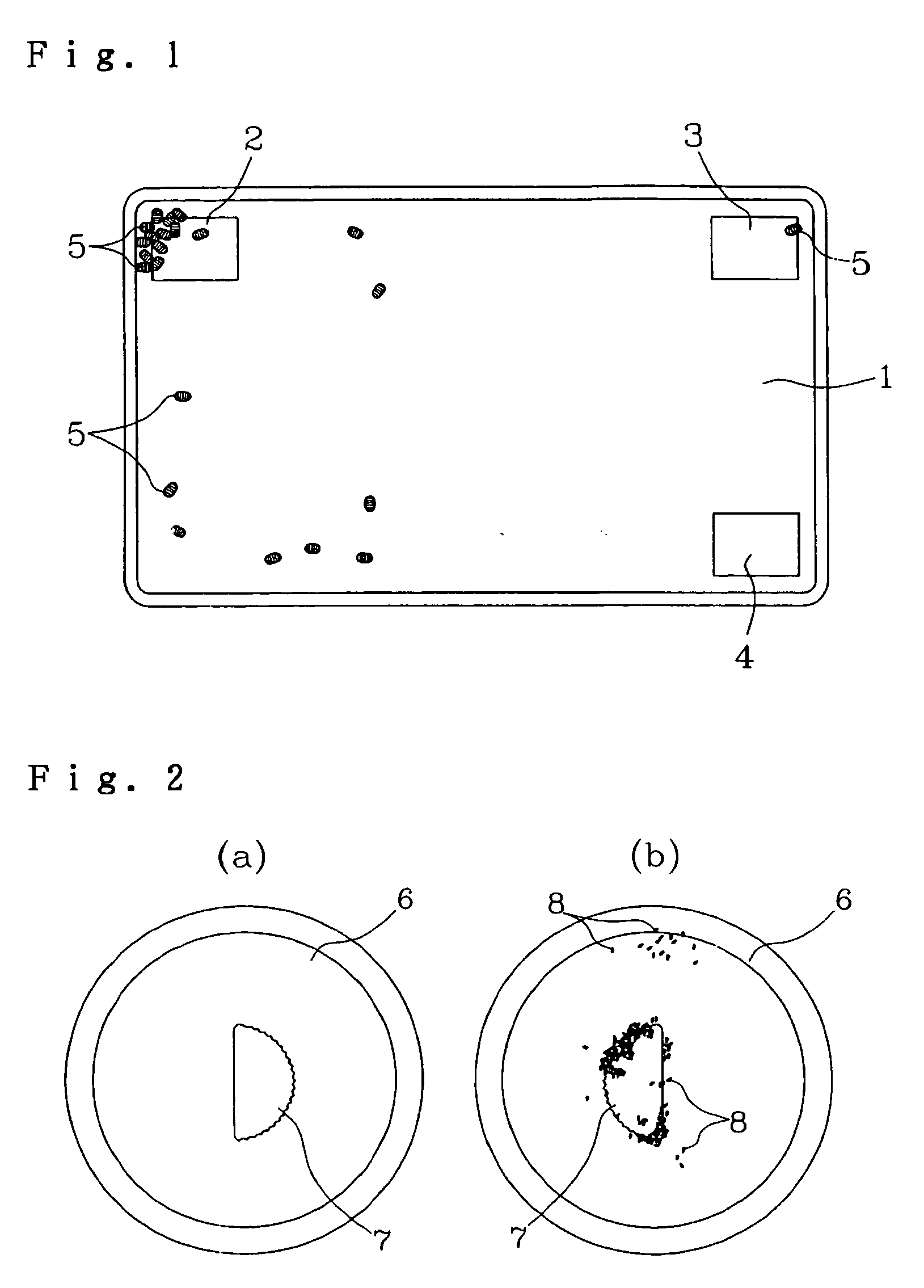Insect repellent
a technology of insect repellent and paradichlorbenzol, which is applied in the field of insect repellent, can solve the problems of poor repellency effect of insect repellent products using paradichlorbenzol, and the use of paradichlorbenzol, and achieve the effects of low cost, improved repellency, and improved safety
- Summary
- Abstract
- Description
- Claims
- Application Information
AI Technical Summary
Benefits of technology
Problems solved by technology
Method used
Image
Examples
example 1
Manufacturing Method 1
[0041] Next, the present invention will be further detailed with referring to the specific examples. Fresh live leaves 50 g of Spiraea Thunbergii Sieb. are sufficiently washed with water and then filled into a mixer, with water 300 g poured, to be ground and agitated for three to five minutes. The liquid is placed in a container and left at rest for one to several days to cause separation into solid and liquid phases. Agitation is carried out when fibers float up. This product smells a raw smell of live leaves and becomes a transparent solution having reddish brown color like whiskies in about one month. This solution smells like plum fruits. The supernatant 300 cc which merely left at rest for several days was placed in a bottle and left at rest in the sun from May to June, resulting in that the supernatant reduced in quantity to about 270 cc in one month.
[0042] In grinding with the mixer, water is used in the extent 200 to 1000 cc with respect to live leave...
example 2
Manufacturing Method 2
[0043] Flowers of Spiraea Thunbergii Sieb. and leaves of Spiraea cantoniensis Lour. are separately processed in the similar way to Example 1 to obtain transparent solutions. A solution provided from the former material has a thinner smell, after one month, in comparison with Example 1 and the insect repelling effect being poor. Another solution provided from the latter material smells the similar smell, after one month, but having a slightly different metal-like smell. The insect repelling effect was the same as or higher than Example 1. In case of using branches, residue is generated much and mold is likely to gather.
example 3
Manufacturing Method 3
[0044] Water containing alcohol (water 150 cc, ethanol 150 cc) was used instead of water and agitated by a mixer in the same manner as Example 1. Supernatant was placed in a bottle and left at rest in the sun similarly. The supernatant lessened to 200 cc when 20 days passed and to 120 cc when 28 days passed. The residual liquid smells a high ethanol smell.
PUM
 Login to View More
Login to View More Abstract
Description
Claims
Application Information
 Login to View More
Login to View More - R&D
- Intellectual Property
- Life Sciences
- Materials
- Tech Scout
- Unparalleled Data Quality
- Higher Quality Content
- 60% Fewer Hallucinations
Browse by: Latest US Patents, China's latest patents, Technical Efficacy Thesaurus, Application Domain, Technology Topic, Popular Technical Reports.
© 2025 PatSnap. All rights reserved.Legal|Privacy policy|Modern Slavery Act Transparency Statement|Sitemap|About US| Contact US: help@patsnap.com

